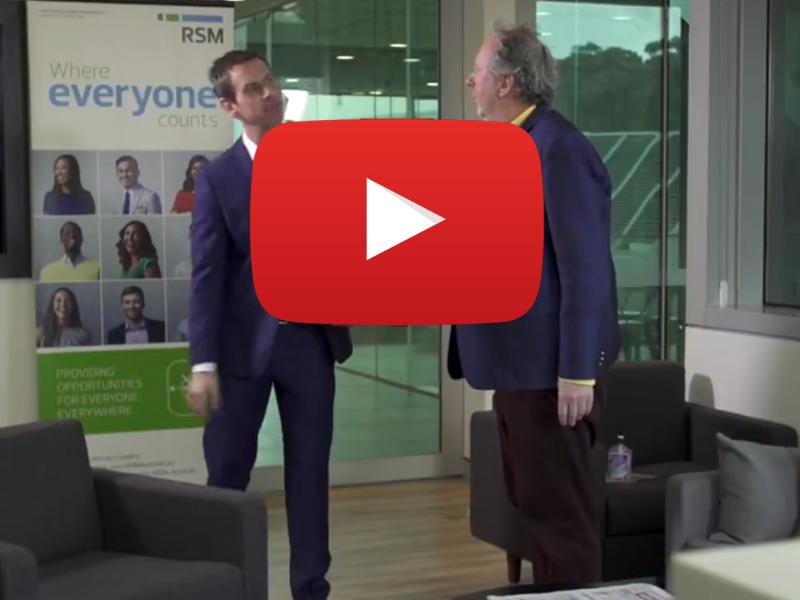Like the traditional walking dead, zombie companies wander aimlessly and unsteadily, not quite alive but still moving.
The term ‘zombie companies’ has become more common as low interest rates let otherwise struggling companies battle on. In the past, many of these underperforming organisations managed to slip under the radar, escaping insolvency by virtue of the fact that financiers were unlikely to enforce their security and the companies were therefore able to meet their basic obligations.
In 2014, these companies were able to repay the interest on their debts, keeping financiers at bay, but they couldn’t reduce the actual debt itself. This trend could continue well into 2015 since there is no expected increase in interest rates in the near future. However, for these organisations to avoid going under in the long-term, they must change course.
Organisations can be termed a ‘zombie company’ if their resources are stretched thin, letting them meet immediate financial obligations but providing no room for growth, debt reduction or investment. They may look for bailouts or handouts but, unless their operating practices change dramatically, they are likely to become insolvent sooner or later regardless of bailouts or other support. This leads to losses for lenders and investors and can have a flow-on effect to the rest of the economy, resulting in higher unemployment, for example.
Some companies need support or even a bailout because of extraordinary circumstances, while others simply need a longer foundation period before they can start to turn a profit. But when an organisation consistently underperforms financially and is doing the bare minimum to meet its financial obligations, it could be a sign that the business is about to reach zombie-status.
These are the five key signs that indicate a company may be headed for zombie-status.
- Covering the bare minimum. Companies that can only cover the bare minimum, such as running costs and interest-only repayments, may be headed for zombie-status if they can’t improve their position in a reasonable time frame.
- Paying interest but not the debt. After paying initial costs such as rent and wages, companies should at least be able to repay interest on outstanding debts. However, if the company is incapable of paying down the actual debt to an agreed timeline then it may already be a zombie.
- Putting a hold on growth. Zombie companies generally are not able to invest in new business or hire new staff. When organisations need to put a prolonged stop to growth and expansion, especially if market conditions are average, this can be a warning sign.
- Failing to secure additional finance. When companies have reached the point where they are only covering interest and not paying off the actual debts, smart financiers and investors will become more hesitant to continue funding the business.
- Extending creditor payment days. Companies that consistently exceed suppliers trading terms and use the Australian Taxation Office (ATO) as a financier by either, not forwarding on statutory liabilities or entering into repayment programs with the ATO, are providing indicators that they may already be walking dead.
When a company becomes a zombie, there are two options. The first is to try to save the company with an overhaul of management practices and operational procedures. The second is to put an end to the cycle and shut the business. Either way, a zombie company cannot be allowed to continue to wander aimlessly, potentially taking others down with them.
Reading the signs of distress
While businesses should be aware of economic indicators when evaluating their business, they should not use them as the only source of information when determining their level of exposure to risk and overall confidence. Different indicators can have positive or negative effects depending on the type of business or industry. For example, a high Australian dollar is good for importers but not for exporters.
Key economic indicators businesses should watch include: the Australian dollar; interest rates; whether big businesses are cutting major projects or staff; cash burn rates; changes in invoice payment times; and the stock market.
An economic downturn is not the only cause of business failure or zombie-ism. The most important thing businesses can do is objectively assess their own business and whether it is showing signs of distress, and then take action before it is too late.
The most obvious sign of distress is if the organisation has inadequate cash reserves to cover contingencies. Poor cash flow control systems not only mean that the company is unlikely to have adequate cash on hand but can also mean it is difficult to identify problems until it is too late. To avoid this, organisations should put in place a clear reporting system that includes debt recovery policies and procedures. Cash flow policies should be reviewed to ensure the business is maximising its potential for income.
Production problems can also be a sign of distress and companies need to watch for escalating costs, excessive downtime and maintenance programs that aren’t working. To overcome production issues, companies must constantly monitor output to ensure they are achieving the most from available resources, and reducing waste and inefficiency.
When there is a lack of a well-defined and balanced organisational structure, and there are no clear tactical plans or strategies, then the organisation may be in trouble. To combat this, businesses should prioritise planning, including putting effective processes in place for succession planning, formal business planning and performance management.
The business should also be flexible enough to respond to changing market conditions in a timely fashion, letting it maximise revenue opportunities.
If the organisation has an unbalanced product range, declining gross margins and unrealistic pricing policies, then it will be vulnerable to the competition. It is also inadvisable for organisations to rely too much on a few customers or industries for income: diversification can reduce risk.
Businesses should keep a close eye on sales trends both within the business and in the broader industry. If sales are declining but the industry is growing, then the business is clearly in trouble.
How businesses can regain financial stability
Often when a business runs into trouble it can be a slippery slope. Without the cash reserves to invest in new staff or processes, businesses can find it difficult to recover. However, it is possible to do so as long as the business owner can take a logical, stepwise approach.
RSM has identified five steps towards business recovery:
- Attack the crisis early and head on. Businesses that admit they are in trouble and commit to turning the situation around are more likely to be successful. They should assess the current situation and make immediate changes that will have the biggest positive impact on cash flow and revenue first. It is vital to set objectives and develop a plan for achieving them. The key is to act decisively and quickly.
- Get information immediately. It may be possible to restructure or extend existing financial credit to ease financial stress in the short term, so it is important for businesses to communicate with financiers and suppliers to get as much breathing room as possible.
- Communicate with customers. If the business needs to make changes to invoicing schedules and payment terms it is critical that they communicate directly with customers to maximise the value of any goodwill and encourage earlier payments. Consider offering aggressive discounts or deals to get cash flowing into the business as quickly as possible.
- Hit the pause button on spending. Businesses in trouble should only buy the minimum inputs needed for the business to operate. Inventory should be kept in line with revenue, while an intense focus on customer service can help build revenue.
- Get help. Organisations should seek professional advice to help make the changes they need. Business and financial advisors can show companies how to restructure both their operations and their financial commitments effectively to maximise their chances of getting back on their feet.




